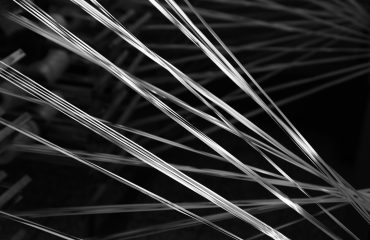Cold drawn round steel bars are a cornerstone of countless industries, providing exceptional strength, precision, and durability. Understanding their properties and applications is crucial for engineers, manufacturers, and anyone working with high-quality steel components. This comprehensive guide will delve into the intricacies of cold drawn round steel bars, exploring their manufacturing process, characteristics, and diverse applications.
The Cold Drawing Process: Shaping Steel with Precision
Unlike hot-rolled steel bars, which are shaped at high temperatures, cold drawing involves pulling a pre-heated steel bar through a series of dies at room temperature. This process significantly alters the steel’s microstructure, resulting in improved mechanical properties. The reduction in cross-sectional area during drawing increases the tensile strength, yield strength, and surface finish. The process also enhances dimensional accuracy, making cold drawn bars ideal for applications requiring precise tolerances. Lubricants are crucial during the drawing process, minimizing friction and preventing surface damage. The precise control over the drawing parameters allows for the creation of bars with a wide range of diameters and tolerances, catering to specific project requirements.
Exceptional Mechanical Properties: Strength and Durability Defined
Cold drawing imparts superior mechanical properties to the steel. The process increases the tensile strength and yield strength significantly compared to hot-rolled counterparts. This enhanced strength translates to improved load-bearing capacity and resistance to deformation under stress. Furthermore, cold drawing improves the surface finish, leading to increased fatigue resistance. The refined microstructure reduces the presence of internal defects, enhancing the overall durability and reliability of the steel bars. The improved surface finish also makes cold drawn steel bars easier to machine and finish, reducing manufacturing costs and time.
Diverse Applications: Where Cold Drawn Steel Bars Shine
The exceptional properties of cold drawn round steel bars make them suitable for a wide array of applications across various industries. They are commonly used in automotive components, such as axles, steering shafts, and connecting rods, where high strength and precision are paramount. The construction industry utilizes cold drawn steel bars in reinforcing structures, offering superior load-bearing capacity and durability. The manufacturing sector employs these bars in the production of machinery parts, tools, and precision instruments, leveraging their dimensional accuracy and excellent machinability. Other applications include hydraulic cylinders, pneumatic components, and various types of fasteners, highlighting the versatility of this material.
Selecting the Right Grade: Understanding Material Specifications
Choosing the appropriate grade of cold drawn round steel bar is crucial for ensuring the success of a project. Different grades offer varying levels of strength, ductility, and other properties. Commonly used grades include low carbon steel, medium carbon steel, and high carbon steel, each with its own unique characteristics and applications. Understanding the specific requirements of the application—strength, ductility, machinability, and cost—is essential for selecting the optimal grade. Material specifications, such as ASTM standards, provide detailed information on the chemical composition, mechanical properties, and tolerances of different grades, facilitating informed decision-making.
Advantages and Considerations: Weighing the Pros and Cons
The advantages of using cold drawn round steel bars are numerous, including superior strength, improved surface finish, enhanced dimensional accuracy, and excellent machinability. These properties translate to improved performance, longer lifespan, and reduced manufacturing costs. However, there are considerations to keep in mind. The cold drawing process can increase the cost compared to hot-rolled steel. Furthermore, the improved strength can sometimes lead to reduced ductility, necessitating careful consideration of the specific application requirements. Understanding both the advantages and limitations is crucial for making informed material selection decisions.
In conclusion, cold drawn round steel bars offer a compelling combination of strength, precision, and durability, making them indispensable in numerous industries. By understanding their manufacturing process, mechanical properties, applications, and selection criteria, engineers and manufacturers can harness their full potential to create high-performance components and structures.
SEO Tags:
- Cold Drawn Steel Bars
- Round Steel Bars
- Steel Bar Manufacturing
- Precision Steel Bars
- High Strength Steel




